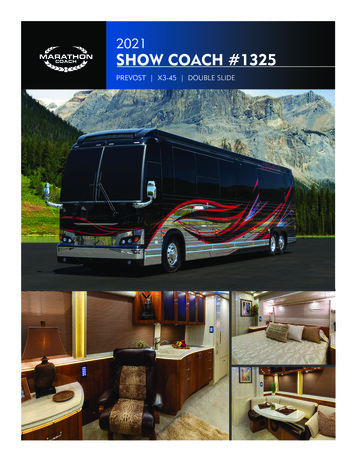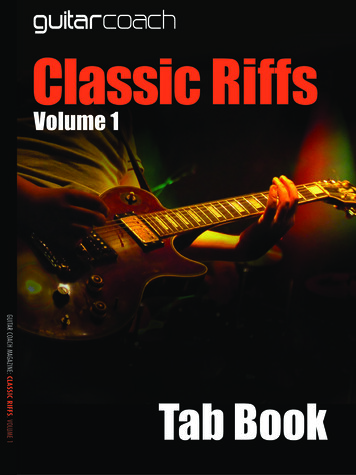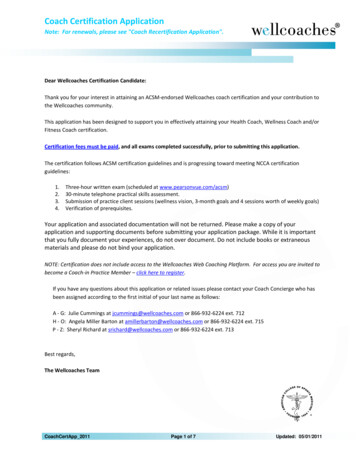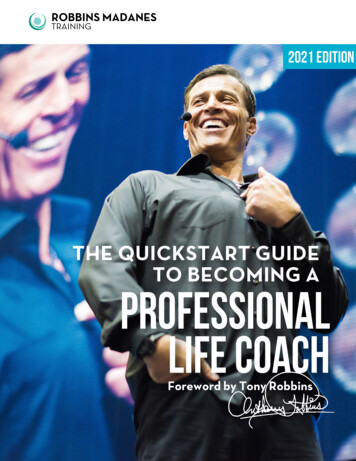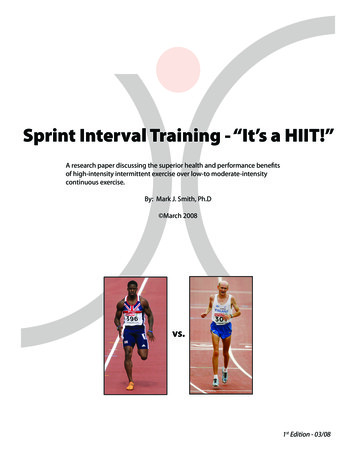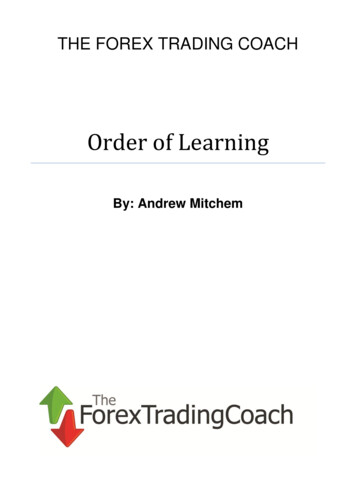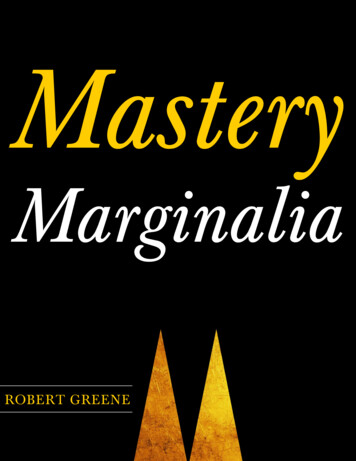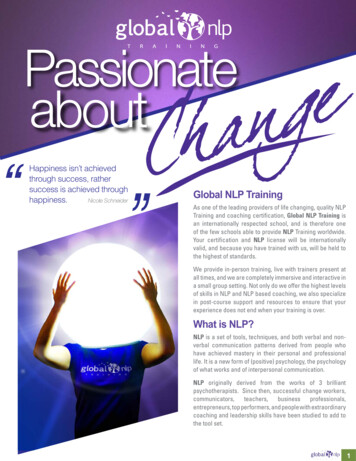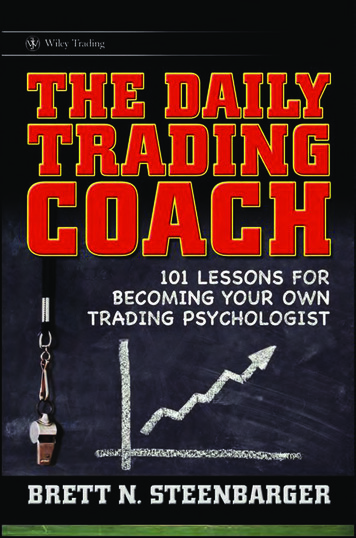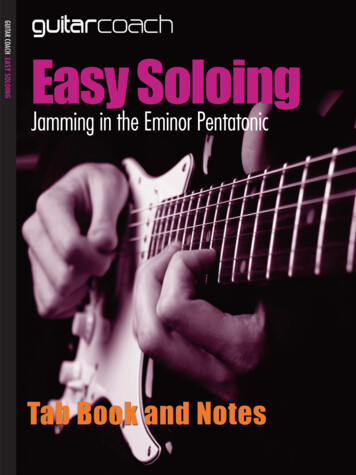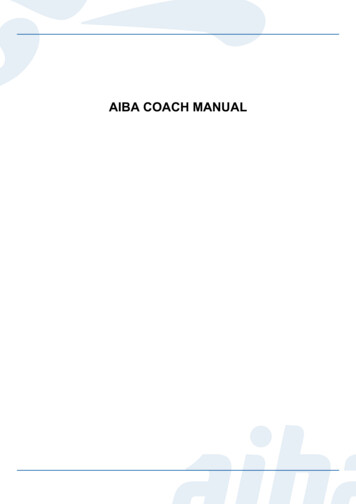
Transcription
AIBA COACH MANUAL
FOREWORDOn AIBA’s initiative this Coaches Manual has been developed in order to help coacheswho are working with young athletes and beginners.The objectives of the manual are to develop a coach’s career and his/her abilities frombeginner to advanced, to standardize teaching methods and to create reference materialwhich can be useful to coaches.Contemporary boxing training is a complex and composite process. Beginner coachesmust get to know many fundamental factors which determine and influence trainingresults. To control and manage the training process correctly, it is necessary to havecomprehensive knowledge and skills, because the coach is fully responsible for the boxer’sdevelopment and sports progress. Finally it is important to remember that boxing trainingis a changeable, non-constant process and must be adapted to various conditions.In this manual, you can find recommended, verified, methodical and rational ways ofreaching training objectives.It is impossible to cover all boxing knowledge in one manual. Therefore, this manual coversonly the most important aspects of coaching, such as organization of the training process,technique, tactics and physical preparation. Selected illustrations and the descriptive partof this manual present elementary boxing techniques in an easy to understand way.Some additional aspects are also covered in brief. The examples of basic teaching methodsin this manual will be useful to coaches and will help them to become a better coach.AIBA Coaches CommissionCOACHES MANUAL - 5
6 - COACHES MANUAL
TABLE OF CONTENTSCHAPTER 1: COACHES 91.1.1.2.1.3.1.4.Definitions 111.1.1.The Coach 111.1.2.The Second 11AIBA Coaches Management System 111.2.1.Coaches Qualifications Policy 111.2.2.Coaches Quality Enhancement Management 121.2.3.Coaches Performance Management - Coaches Evaluation 121.2.4.Coaches In-Competition Management 131.2.5.Coaches Database 131.2.6.Coaches Academy Management 141.2.7.World Series of Boxing Coaches Management 14Skills and Responsibilities 15Coaching Styles 161.4.1.Autocratic Coaching 161.4.2.Democratic Coaching 161.4.3.Casual Coaching 16CHAPTER 2: TRAINING 172.1.2.2.2.3.2.4.2.5.2.6.Training with Beginners 192.1.1.Training Stages 192.1.1.1.Initiation Stage 202.1.1.2.Basic Stage 202.1.1.3.Specialization Stage 212.1.1.4.High-Performance Stage 21Group Coaching 22Teaching and Training Methods 232.3.1.Teaching Methods 232.3.2.Training Methods 25Organizing Training Sessions 272.4.1.Facility 272.4.2.Equipment 282.4.3.Preparing Training Programs 29Boxing Techniques 322.5.1.Boxing Stance 322.5.2.Boxing Steps 342.5.3.Basic Punches 382.5.3.1.Straight Punches 392.5.3.2.Hook 442.5.3.3.Upper Cut 492.5.4.Basic Defenses 542.5.5.Combinations of Punches 672.5.6.Feinting 682.5.7.Boxing in Various Distances 69Physical Trainings 702.6.1.Endurance 702.6.2.Strength 712.6.3.Speed 722.6.4.Coordination 73
2.7.2.8.2.9.2.10.2.11.Tactical Training 741.2.1.Boxing against different boxing types 751.2.2.Boxing on the ropes and in the corner 76Training Without Equipment 77Athlete Motivation 78Recovery 79Evaluation 802.11.1.Training Sessions 802.11.2.Technical Development 812.11.3.Physical Development 822.11.4.Tactical Development 83CHAPTER 3: COMPETITION 853.1.3.2.3.3.3.4.Prior to the Competition 87During the Competition 953.2.1.Before the bout 953.2.2.During the bout 983.2.3.Affter the bout 99After the Competition 100Rules and Regulations 1013.4.1.Age Classification 1013.4.2.Weight Categories 1013.4.3.Eligibility of Boxers 1033.4.4.Duration and Number of Rounds 103The Decision 1033.4.5.CHAPTER 4: ADDITIONAL ASPECTS IN BOXING 1074.1.4.2.4.3.4.4.Medical 109Injuries 1094.1.1.4.1.2.Injury Prevention 1094.1.3.Treatment for Minor Injuries 1104.1.4.Treatment for severe injuries 112Nutrition 113Weight Monitoring 114Anti-Doping Testing 1144.4.1.In Competition Doping Test 1144.4.2.Out of Competition Doping Test 115CHAPTER 5: ADVANCED TECHNIQUES 1175.1.Advanced Techniques – Europe 1215.1.1.Boxing Stance 1215.1.2.Footwork 1295.1.3.Attacks 133Defenses 1345.1.4.5.1.5.Feints 1355.1.6.Training Plan Development 1365.1.7.Psychological Preparation 142Tactics 1435.1.8.5.1.9.In-Competition Activities 144
5.2.5.3.5.4.5.5.Advanced Techniques – Russia 1465.2.1.Boxing Stance 1465.2.2.Footwork 1535.2.3.Attacks 1575.2.4.Defenses 1595.2.5.Feints 1615.2.6.Training Plan Development 1625.2.7.Psychological Preparation 1735.2.8.Tactics 1745.2.9.In-Competition Activities
Place a small cone near the heavy bag (approximately 1 - 2 meters away) 2. On coach’s whistle, boxer punches a heavy bag with a competition style (not with full speed) for 30 seconds 3. Boxer moves to the cone and jump over the small cone with two feet together (jumping on side or forward) for 30 seconds 4.

